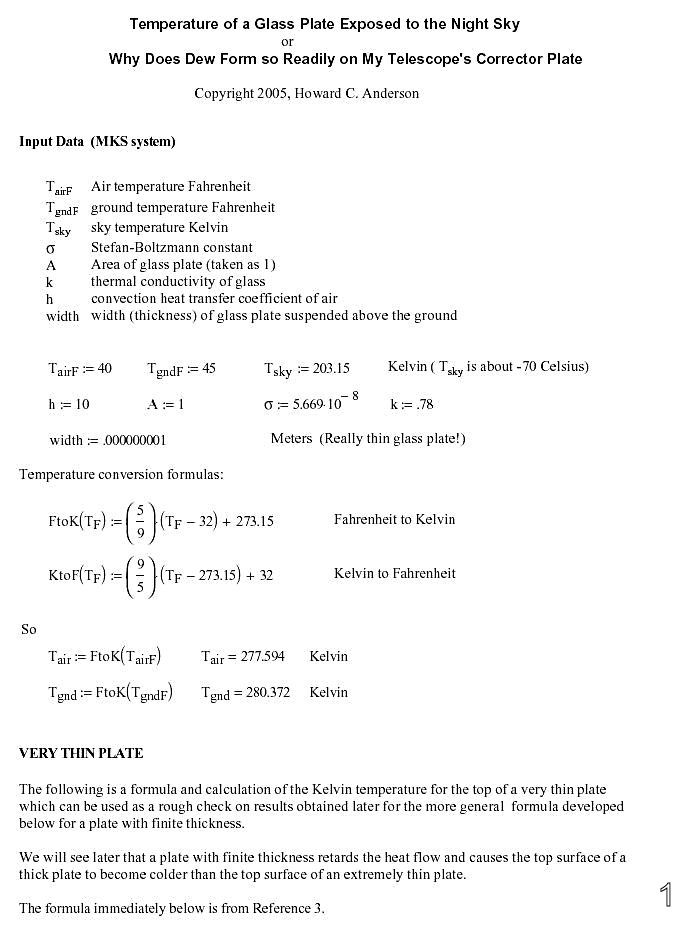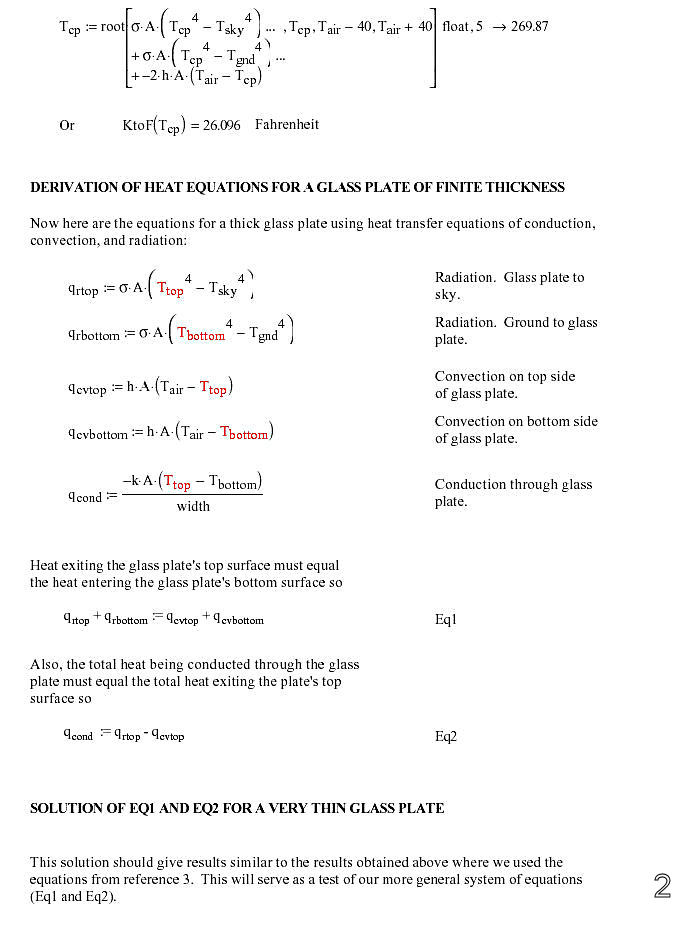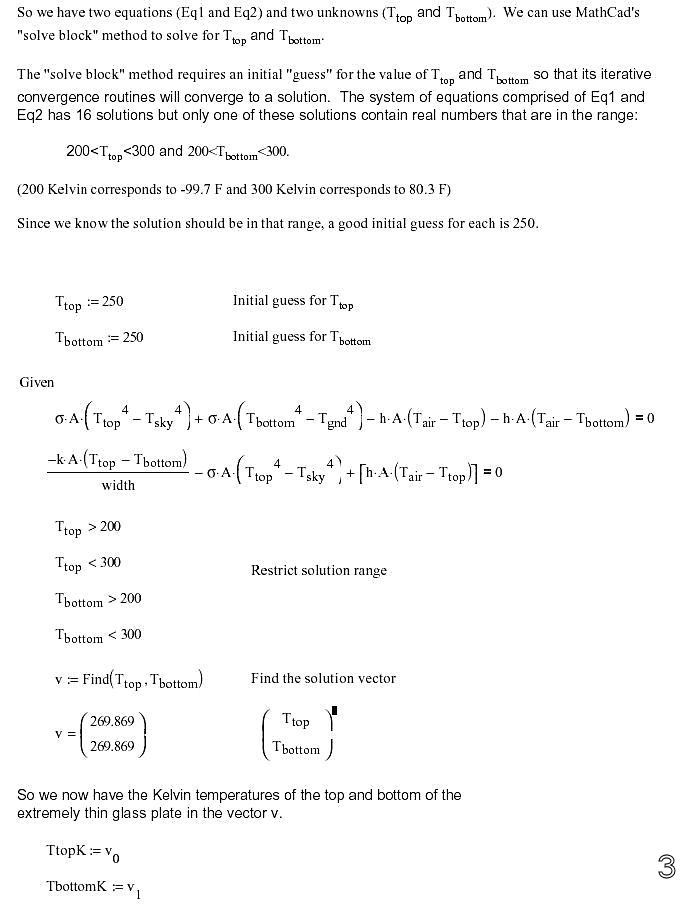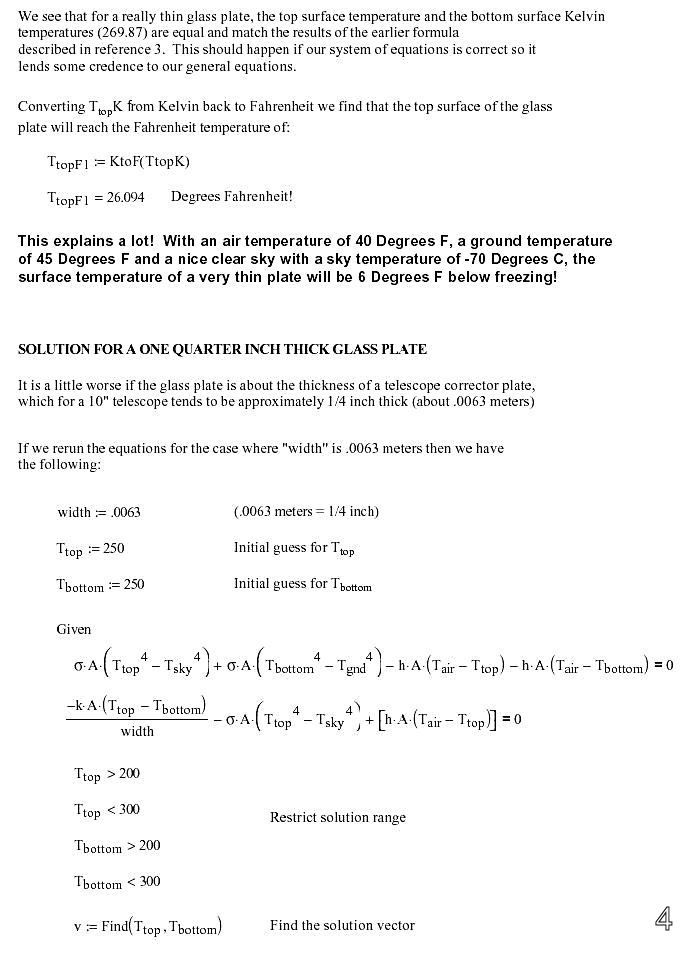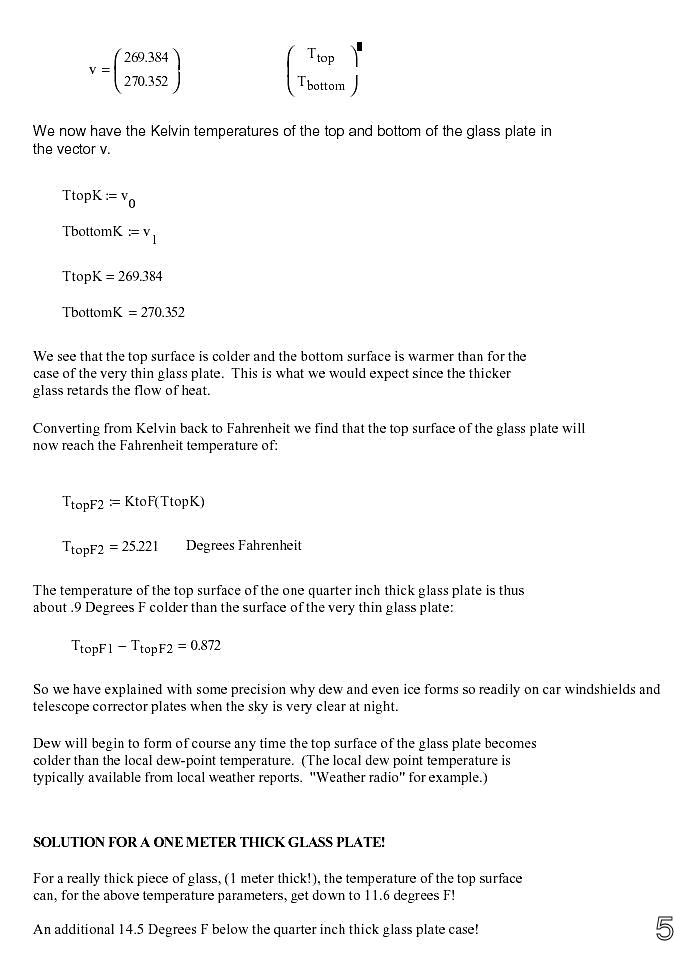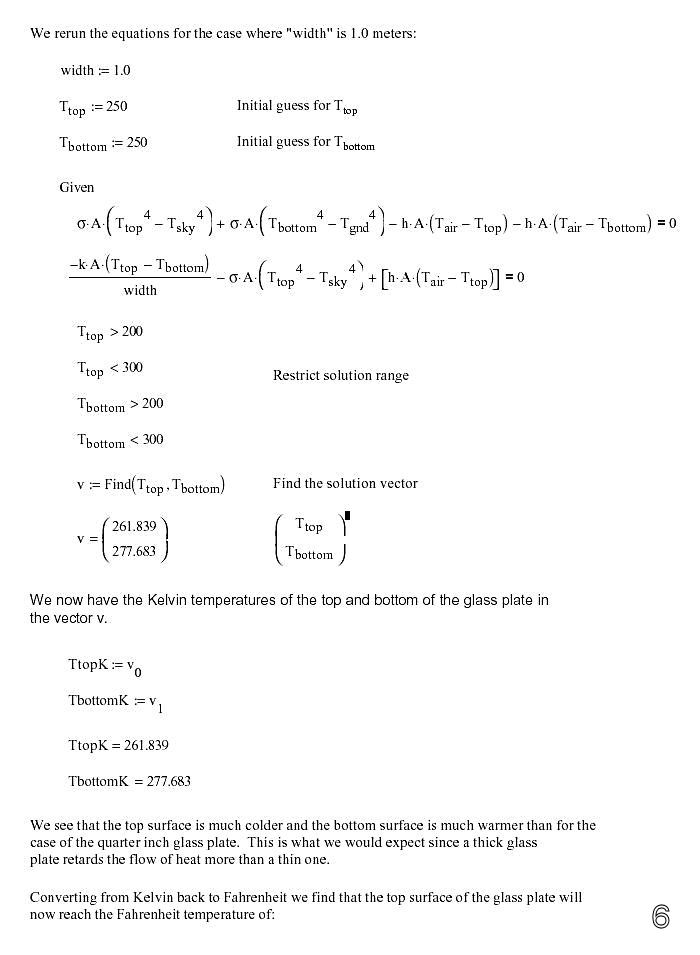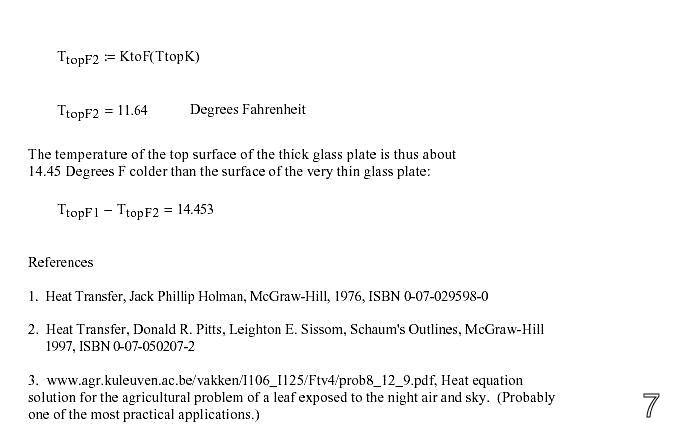Temperature of a Glass Plate Exposed to
the Night Sky
or
Why Does Dew Form so Readily on My Corrector Plate?
We don't get dew on our telescope corrector plates very often here in
Arizona. However there are times when "dewsaster" strikes.
Usually during some attempt to image some deep sky object or to image
some short-lived phenomena like a transit of Jupiter's moons.
I have always wondered why my car windows can get ice on them when the
air temperature never goes below 40 Degrees Fahrenheit. I looked
out on many web sites. Somehow, I just couldn't let go once I
started this. I wanted to know why and how much - analytically.
After working through all of this, and to eliminate suspense, here is
what happens if you have a plate of glass elevated above the ground and
exposed to the night sky:
There are three types of heat transfer, conduction, convection and
radiation.
- Convection heating from the air warms the top and bottom surfaces
of the glass plate.
- Radiation from the ground warms or cools the bottom surface of
the glass plate.
- Conduction allows heat to flow through the glass from the bottom
surfaceto the top surface.
- Radiation from the top of the glass plate to the sky cools the
top surface of the glass plate.
Radiation transfers MUCH more heat to the night sky than intuition led
me to believe. It is proportional to the difference between
the fourth power of the temperature of the top surface of the
glass plate and the fourth power of the night sky temperature.
Lots of semi-misinformation out there on the internet. Some said
the night sky temperature is 3 Degrees Kelvin (which is the background
temperature of the universe.) However, the night sky is full of
air that radiates back at us. So the generally accepted value is
approximately -70 degrees Celsius or 203 Kelvin.
I did not find any solution on the internet to the problem that took
the thickness of the glass into account. Now I know why. It
is a tougher problem than I originally envisioned. The only
relevant exposition I found was an analysis of the temperature of an
extremely thin leaf exposed to the night sky. (This has
significance for agriculture and is probably the most practical
application.) As it turns out, for thicknesses on the order of
1/4 inch, the contribution is significant but not overwhelming.
Of course the only way to be sure how much it would contribute was to
work it all out.
When you try to take the thickness of the glass into account, you are
immediately presented with one additional unknown (the temperature of
the bottom surface of the glass plate) and it was very hard for me to
see how to handle it. The solution was to observe that the heat
flow through the glass had to equal the heat transferred through the
top surface of the glass. This provided an additional equation so
now there was a system of two equations and two unknowns which could be
solved. Even so, Mathcad was unable to compute a closed-form
solution. I had to settle for numerical calculations. This
means that so far, I am unable to write a program to do the
calculations. They have to be done using Mathcad.
So, how cold can the top surface of the glass get? With air
temperature of 40 F, ground temperature of 45 F and night sky of -70 C,
the top surface of a 1/4 inch glass plate goes down to 25.2 F!
That is 6.8 Degrees F below freezing! No wonder "dewsaster"
strikes! No wonder car windows ice up! No wonder roofs get
frost on them even though the air temperature stays well above
freezing!
Of course the body of a telescope slows this process down a little but
I shudder to think of the calculations that would be required to
characterize a complete system. However, experience in the field
makes me think that the telescope does not contribute very much to the
situation and that a corrector plate mounted on a telescope would not
fare much better than a corrector plate suspended in air with no
telescope body. (This could be tested in the field.)
A word here about
dew shields:
Note
that "dew shields" DO work because they do not allow the corrector
plate to "see" the whole night sky. The corrector plate "sees" a
little circle of the night sky and it sees the dew shield. The
dew shield also radiates to the night sky but is also warmed by the
air. This delays the cooling of the top surface of the corrector
plate and delays formation of dew on the corrector plate.
Possible improvement: If the dew shield were constructed of two
concentric cylinders with stand-offs to create about a 1/2 inch space
between them, then, as the outer cylinder cooled, it seems likely that
a small convection current would be set up in the space between the two
cylinders since the outer cylinder would be cooled by radiation.
Cool air would then flow out the opening at the bottom. This
would draw relatively warm air in at the top which would convectively
warm the inner surfaces. This would seem to be a better dew
shield that might prevent dew from forming on the corrector
plate. This principle would also of course apply to Newtonian
reflectors. An additional cylinder about the telescope tube with
stand-offs might be a good idea if dew is a major consideration...
So, if you have Mathcad 12, here is the mathcad file: dewtell2.mcd. This can be used to do
your
own calculations using different temperatures. (Arrrrghhh
ISP doesn't like .mcd suffix so fails to deliver the file! Here
is a zip file containing dewtell2.mcd that hopefully will get around
their whacko filters: dewtell2.zip )
Also, here is a PDF file that might be useful: dewtell2.pdf.
Otherwise, here is the content of dewtell.pdf as a set of JPEG files:
Copyright 2005 Howard C.
Anderson
RETURN TO
HOME PAGE
